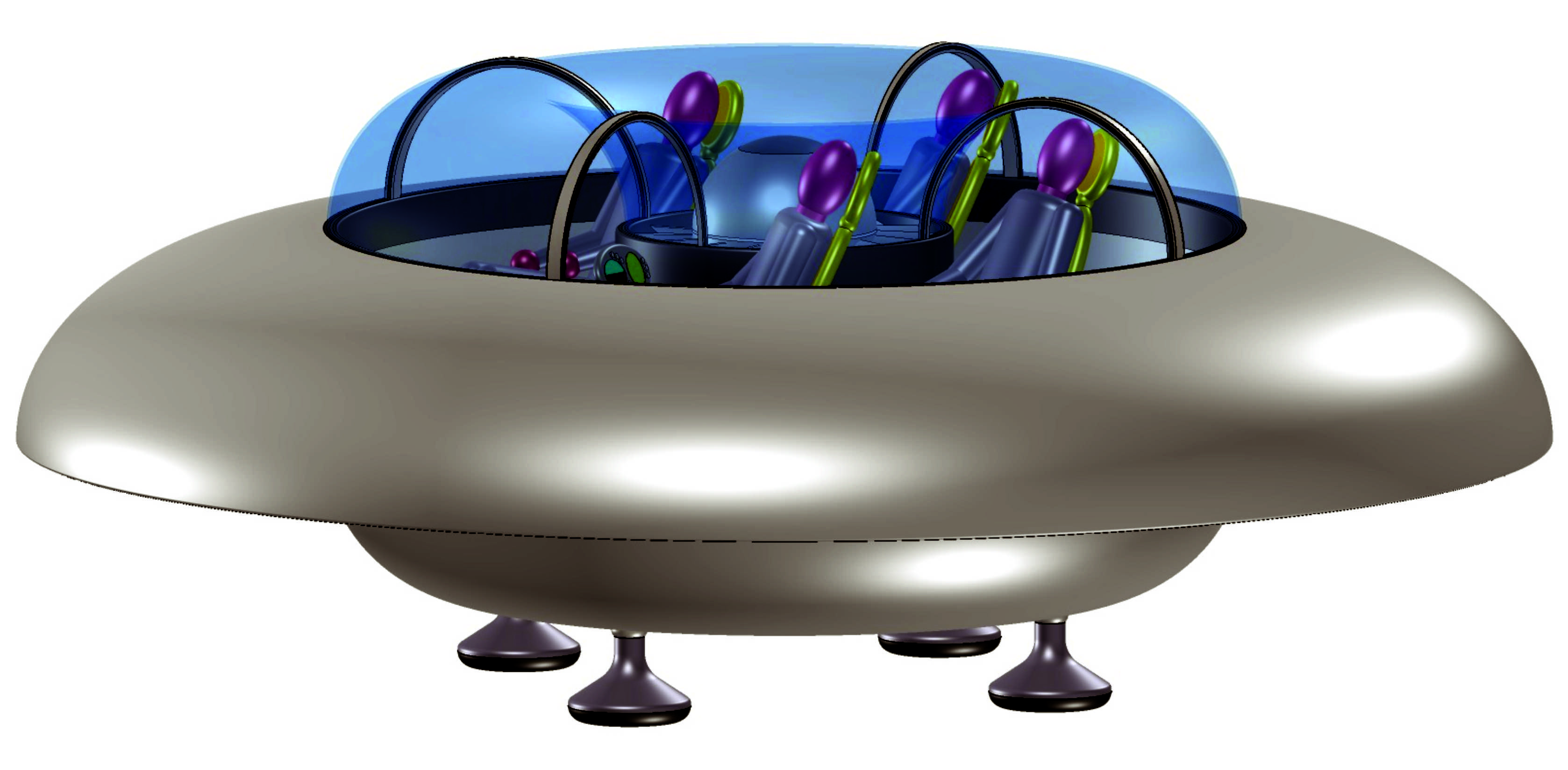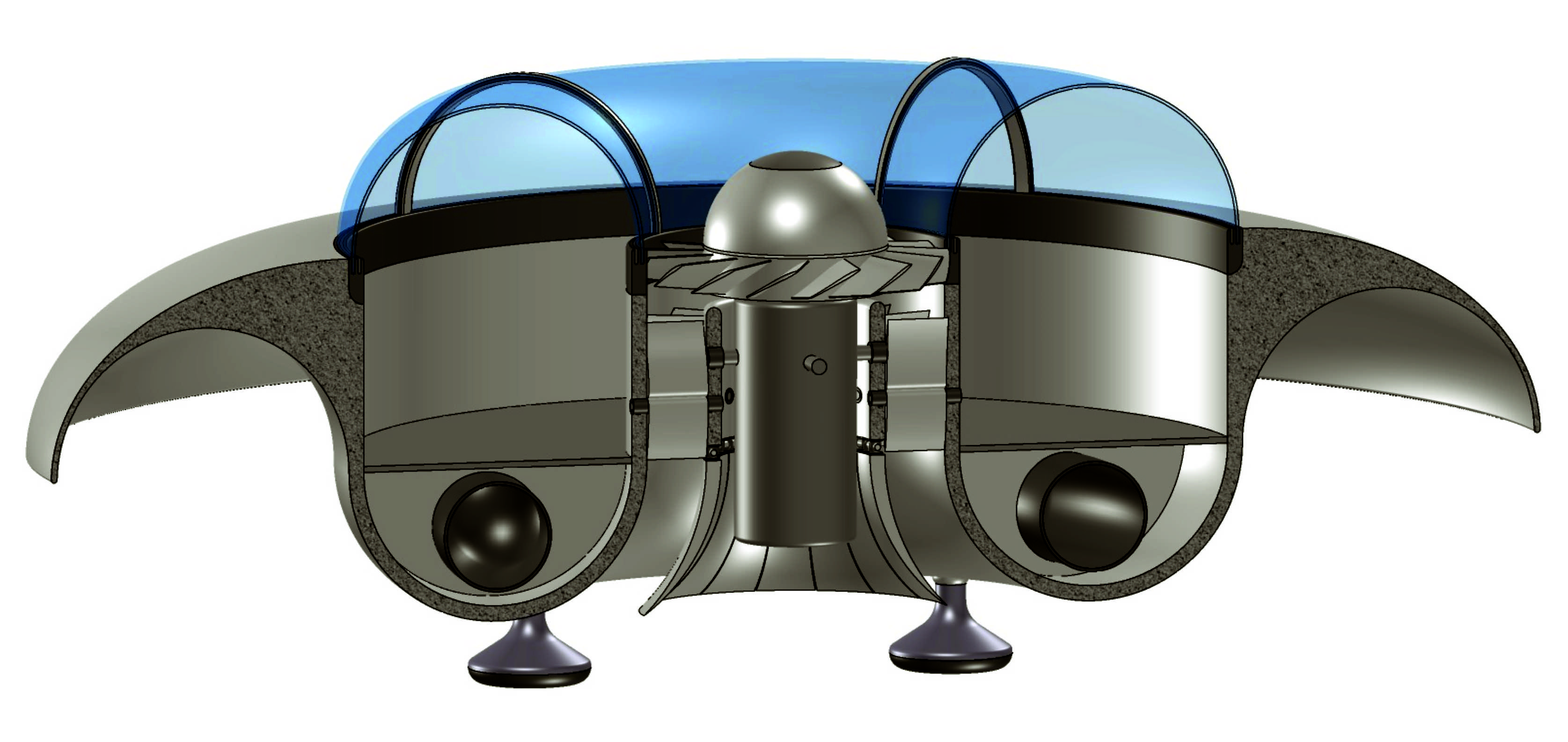Investigation of novel vertical take-off and landing (VTOL) aircraft concept, designed for operations in urban areas
 |
 |
http://www.mul2.polito.it/anuloid
Info
| Call: | FP7-AAT-2012-RTD-L0 | Grant Number: | 334861 |
| Start Date: | 01/04/2013 | Duration: | 24 Months |
Coordinator
Partners
Summary
The principal objective of this project is the computational and experimental investigation of a novel concept of VTOL (Vertical Take-Off and Landing) aircraft - the Anuloid – with respect to its flying qualities, structural feasibility, and aerodynamic characteristics. The Anuloid is conceived for transport missions in urban areas.
The Anuloid is a VTOL aircraft with a toroidal shape and a turboshaft engine in its centre that drives a ducted rotor. The outer diameter is equal to 5 m; the maximum take-off weight should not exceed 1200 kg. Only one propulsion system is implemented for both lift and cruise; this should lead to a more favourable payload-to-empty weight ratio. The forward flight speed of the Anuloid is expected to be in the 100-200 km/h range. The typical operating scenarios are the emergency missions and civil transportation in urban areas.
The Anuloid concept is based on the following three main features:
- The use of a ducted fan powered by a turboshaft for the lift production to take-off and fly.
- The Coanda effect that is developed through the circular internal duct and the bottom portion of the aircraft to provide further lift and control capabilities.
- The adoption of a system of ducted fixed and swivelling radial and circumferential vanes for the anti-torque mechanism and the flight control.
This aircraft can be considered as an enhanced VTOL with respect to helicopters in terms of lowered noise pollution (due to the ducted engine) and wider operational scenarios. The research activity had dealt with the structural design, the aerodynamic analysis – CFD and wind tunnel -, flight mechanics, and manufacturing.
The main outcomes of the project are the following:
- The structural and aeroelastic design of the Anuloid is not critical. The combined adoption of stiffened thin-walled structures and composite materials makes the Anuloid structure light and robust.
- The Coanda effect is in place during vertical and horizontal flight. Such an effect can be considered as one of the lift and control sources.
- The Anuloid surrounding flow can be 3D with flow separation regions.
- The vertical flight characteristics of the Anuloid are desirable. On the other hand, the horizontal flight characteristics of the Anuloid in its current form render the aircraft flyable, but not controllable.
A few main recommendations can be drawn for future developments,
- The performance of the Anuloid, in particular, the CL/CD ratio for horizontal flight, should be improved.
- A nonlinear multi-channel and multi-loop controller should be developed for Anuloid that will allow piloted control of the aircraft.
- To support efficiently the Coanda effect on the lower annular cavity some active flow control techniques can be also taken into consideration. For example, the suction or the presence of synthetic jets appropriately positioned and oriented can maintain the flow attached to all the curved surface.
MUL2 Investigators
Erasmo Carrera, Marco Petrolo, Enrico Zappino
Reports and Papers
Petrolo M., Carrera E., D'Ottavio M., De Visser C., Pàtek Z., Janda Z., "On the development of the Anuloid, a disk-shaped VTOL aircraft for urban areas", Advances in Aircraft and Spacecraft Science (2014), 1(3), pp. 353-378
Newsletter of the European Aeronautics Science Network - EASN, December 2015
